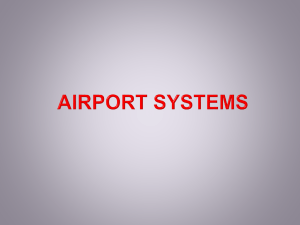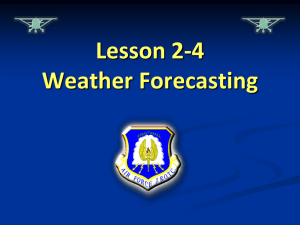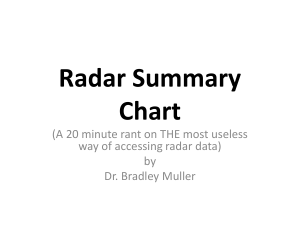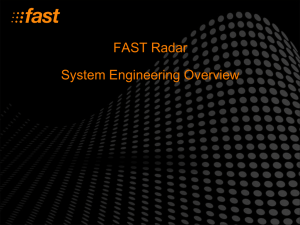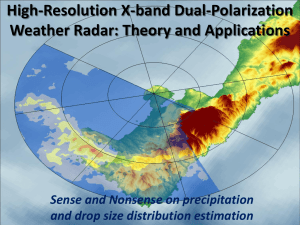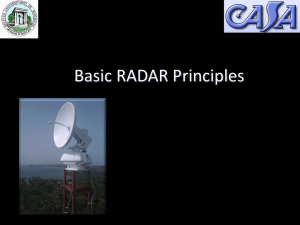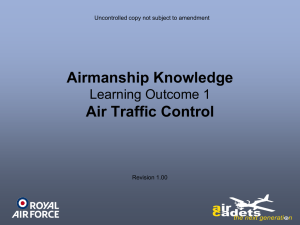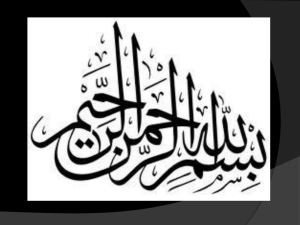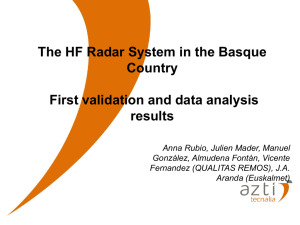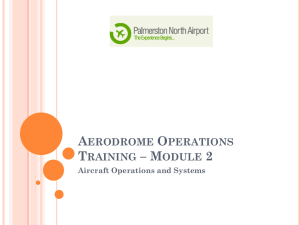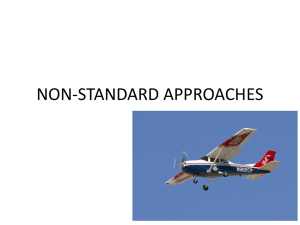Airmanship Pt 2
advertisement
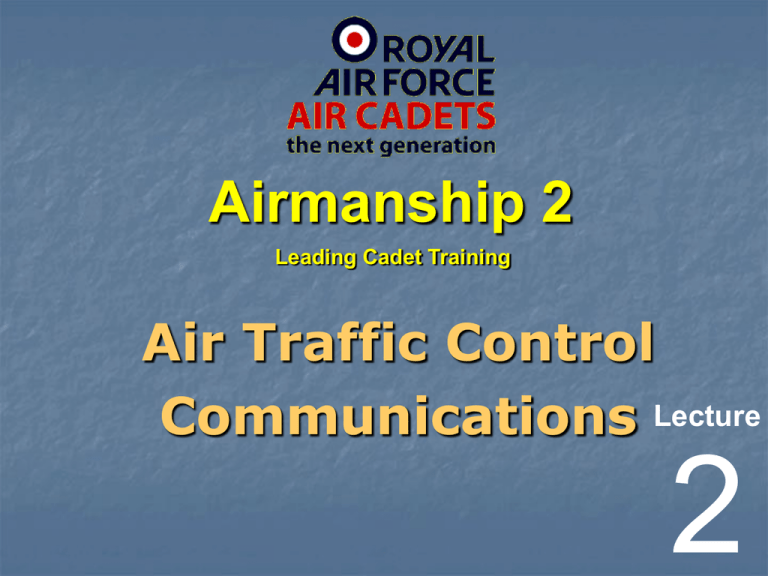
Airmanship 2 Leading Cadet Training Air Traffic Control Communications Lecture 2 Introduction The control of air traffic greatly depends upon good communications; both ground-to-ground and ground-to-air. Swift, accurate contact is achieved by the use of: Special Telephones Tele-Talk Systems Radio Telephony (RT) Communications Telephone The tower will most likely have its own switchboard to make calls. Tele-Talk The tower will most likely have a tele-talk system for direct contact with vital offices and sections on the airfield. Radio The main communication method is by radio (RT), on VHF or UHF bands. Each airfield has its own frequencies for airfield and approach control. Visual Communications Information and instructions can be communicated visually by: Active means, such as signal lamps Passive means, through the use of ground markings and signs. Visual Communications Active Signalling Light signal colours and their meanings Passive Signalling Stationary Object Hazards Identified by a three sided solid, mounted on a pole and set in a round base. Passive Signalling Bad Ground Markers Used at airfields when taxiing on the grass. A WHITE CANVAS “V” marker with a red band A Yellow flag or square, on a light stake (sides of square approx. 0.61 m). A striped solid, alternating yellow and black every 0.2m Helicopter Operating Areas Identifiable by white “H”, 4 metres high, with a 2 metre crosspiece. Normally well clear of fixed wing operations. May be further highlighted by the use of edging round the landing area. Helicopter operating area marker Communication Aids Enable pilots to take off and land almost regardless of the prevailing weather conditions. There are many forms of radio and radar: Navigation Aids: designed to help fly safely between airfields and on operational tasks. Airfield Approach Aid: guides an aircraft down to a point in the vicinity of the airfield. Runway Approach Aid: guides the aircraft down to a position on the correct approach near to the touch-down point on the runway in use. Radio Aids The two main Radio Aids likely to be seen at Royal Air Force airfields are: Digital Resolution Direction Finding (DRDF) Instrument Landing System (ILS) DRDF This is a common airfield approach aid. It receives a transmission and displays it on a screen as a green line called a “trace”. Enables the approach controller to tell the pilot what course to fly to reach the airfield. DRDF Controllers can direct aircraft to a point above the airfield and from there Control its Descent Through Cloud (CDTC) to a height and position on the approach from which the pilot can either land visually or employ a runway approach aid. Instrument Landing System ILS is a runway approach aid where fixed ground transmitters send out a special pattern of radio signals which define a radio beam, so aircraft are guided to the touch-down point. Instrument Landing System ILS transmits 2 frequencies 90Hz (aircraft is too high) No noise = Good glide path 150Hz (aircraft is too low) RADAR Stands for (RAdio Detection And Ranging) Consists of a Transmitter and a Receiver. A short pulse of energy is transmitted from an aerial and the receiver “listens” for an echo. RADAR The receiver detects reflections from aircraft, and can determine their position, direction of travel and speed. This information is then displayed through a cathode ray tube onto a screen. In this way radar has become the “eyes” of the air traffic control. Radar Aids. The two main radar aids likely to be seen at Royal Air Force airfields are: Surveillance Radar Precision Approach Radar (PAR) Surveillance Radar Used both to monitor air traffic passing through an area and as an airfield approach aid. Enables the controller to locate the aircraft and to direct it to a position and height near the airfield. Precision Approach Radar PAR 2000 is the RAF’s main Precision Approach Radar. The radar aerial and cabin are located near the runway. Precision Approach Radar The controller has two screens, one for the azimuth (left and right) and one for elevation (height). Both screens relate to the aircraft approach path. Precision Approach Radar The controller passes instructions by RT to the pilot to guide the aircraft down the correct glide slope towards the touch-down point. This is called a Ground Controlled Approach (GCA). Check Understanding What are the three main communication aids within Air Traffic Control? Telephone, E-Mail, Tele-Talk Telephone, E-Mail, Talk-Talk Telephone, Semaphore, Radio Telephone, Tele-Talk, Radio Check Understanding What would be used to indicate a stationary object that constitutes a hazard? A white ‘V’ marker with a red band A yellow flag or square A striped yellow and black marker A three sided solid on a pole. Check Understanding What does a Yellow and Black striped solid object signify? A hazardous stationary object Bad ground A helicopter landing area Closed taxiway Check Understanding What does a yellow flag or square signify? A hazardous stationary object Bad ground A helicopter landing area Closed taxiway Check Understanding How are helicopter landing areas identified? With a yellow ‘H’ With a white ‘H’ With a yellow ‘Z’ With a white ‘Z’ Check Understanding The two main Radio Aids likely to be seen at Royal Air Force airfields are: Tele-Talk and ILS DFTS and ILS. Telephone and ILS. DRDF and ILS. Check Understanding What does ILS stand for? International Landing System Inertial Landing System Independent Landing System Instrument Landing System Check Understanding What does the abbreviation RADAR stand for? Rapid Detection and Ranging Radio Detection and Reporting Rapid Detection and Reporting Radio Detection and Ranging Check Understanding What does the abbreviation PAR stand for? Precise Approach Radio Precision Approach Radar Precise Application Radar Precision Application Radio Check Understanding PAR is one of the main radar aids likely to be seen at Royal Air Force airfields. What is the other ? Precision Radar Surveillance Radar Subjective Radar Suspended Radar Airmanship 2 Leading Cadet Training End of Presentation
